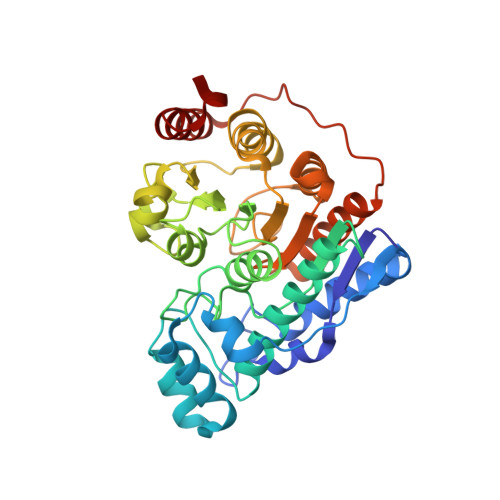Rational Design of Suprastat: A Novel Selective Histone Deacetylase 6 Inhibitor with the Ability to Potentiate Immunotherapy in Melanoma Models.
Noonepalle, S., Shen, S., Ptacek, J., Tavares, M.T., Zhang, G., Stransky, J., Pavlicek, J., Ferreira, G.M., Hadley, M., Pelaez, G., Barinka, C., Kozikowski, A.P., Villagra, A.(2020) J Med Chem 63: 10246-10262
- PubMed: 32815366
- DOI: https://doi.org/10.1021/acs.jmedchem.0c00567
- Primary Citation of Related Structures:
6TCY - PubMed Abstract:
Selective inhibition of histone deacetylase 6 (HDAC6) is being recognized as a therapeutic approach for cancers. In this study, we designed a new HDAC6 inhibitor, named Suprastat, using in silico simulations. X-ray crystallography and molecular dynamics simulations provide strong evidence to support the notion that the aminomethyl and hydroxyl groups in the capping group of Suprastat establish significant hydrogen bond interactions, either direct or water-mediated, with residues D460, N530, and S531, which play a vital role in regulating the deacetylase function of the enzyme and which are absent in other isoforms. In vitro characterization of Suprastat demonstrates subnanomolar HDAC6 inhibitory potency and a hundred- to a thousand-fold HDAC6 selectivity over the other HDAC isoforms. In vivo studies reveal that a combination of Suprastat and anti-PD1 immunotherapy enhances antitumor immune response, mediated by a decrease of protumoral M2 macrophages and increased infiltration of antitumor CD8+ effector and memory T-cells.
Organizational Affiliation:
Department of Biochemistry and Molecular Medicine, The George Washington University, Washington, District of Columbia 20052, United States.























